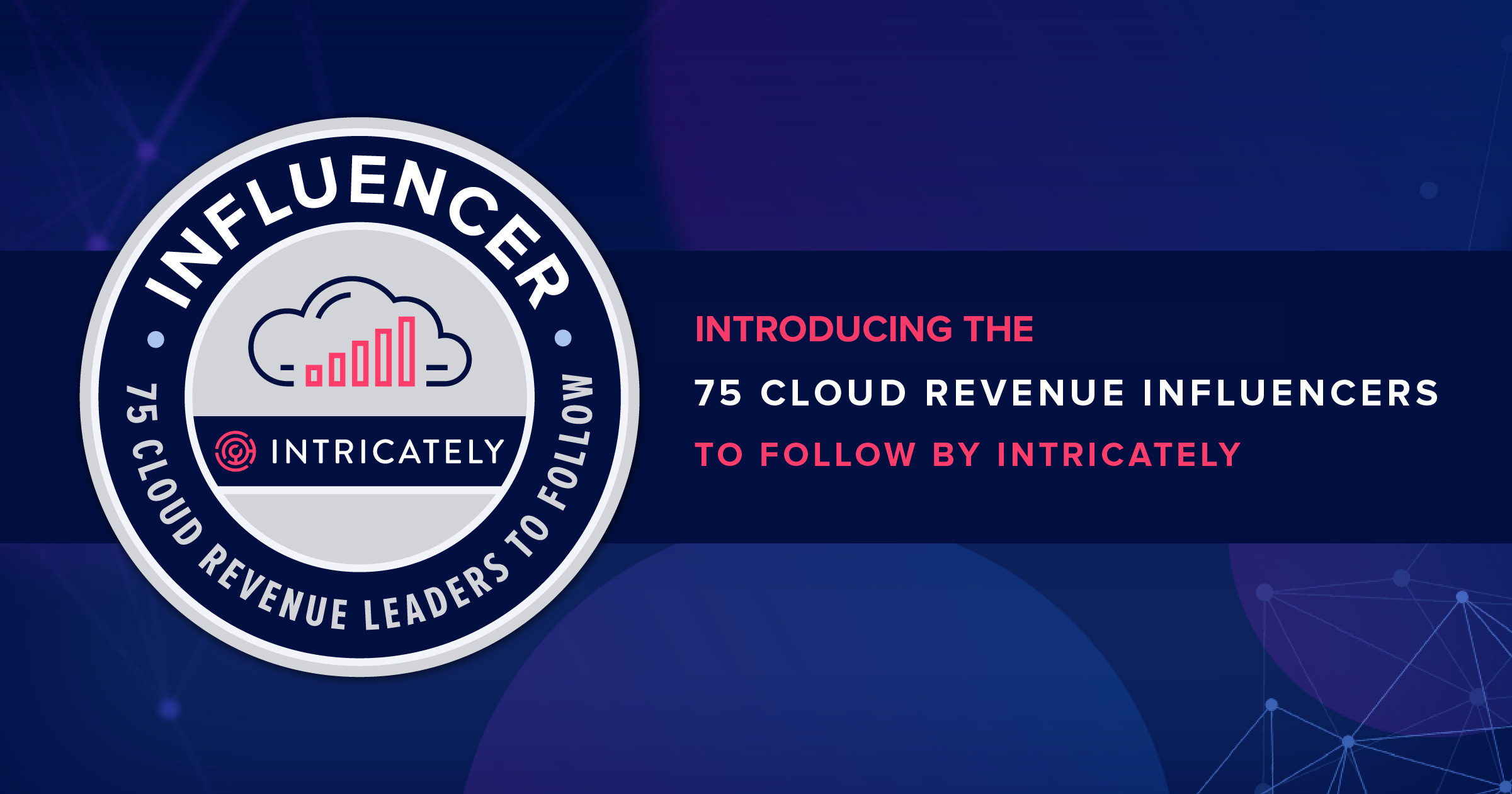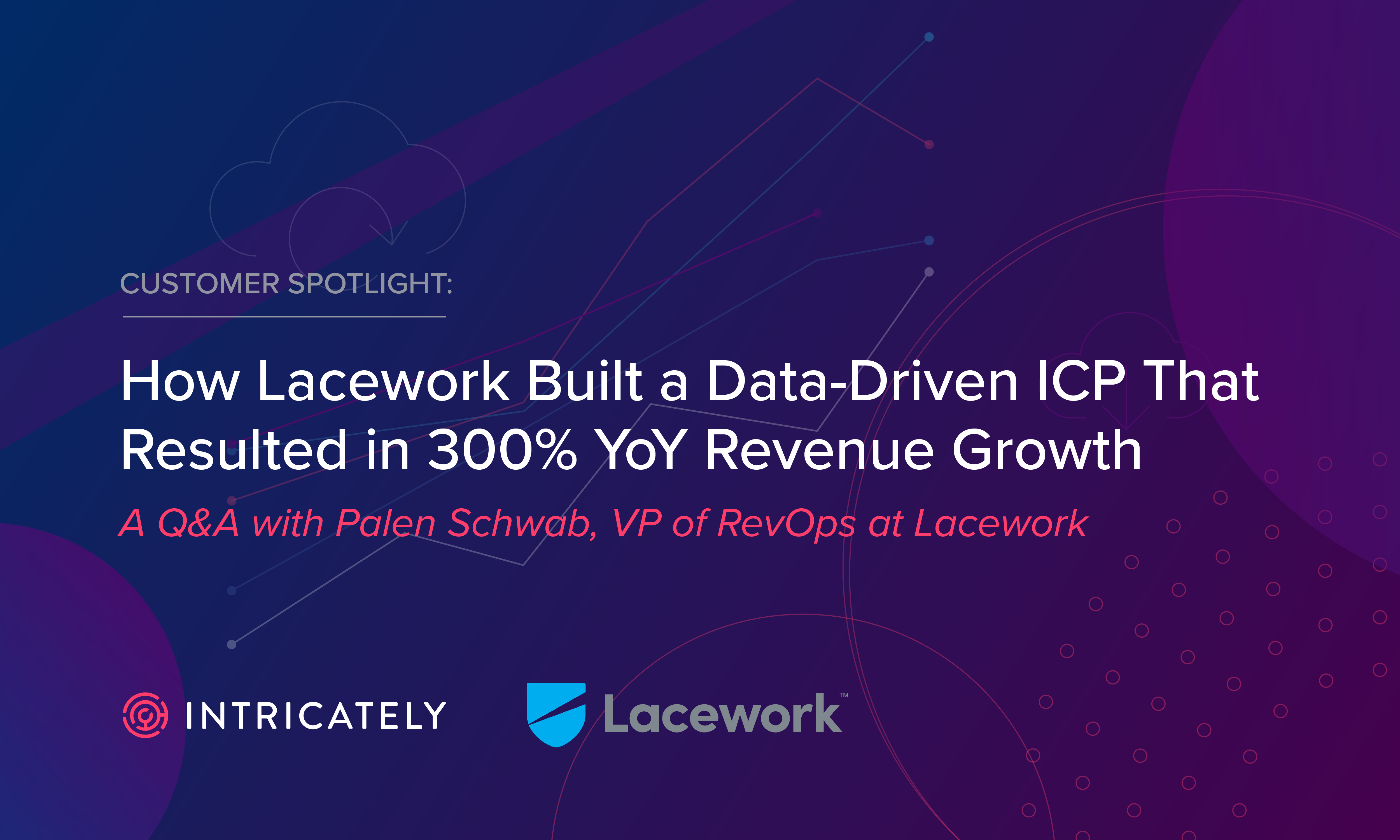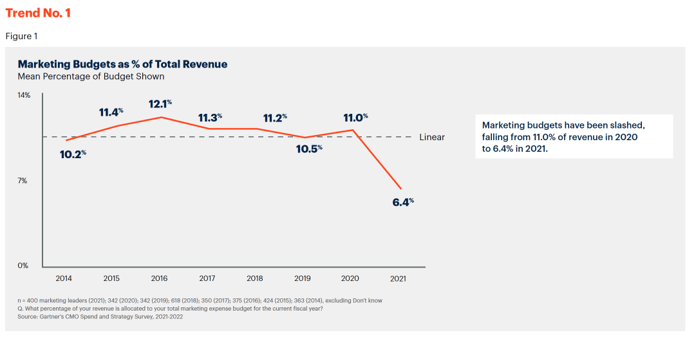
 back to all posts
back to all posts
4 Ways Cloud Marketing Leaders Can Get the Most From Their Budgets in 2022

Budget allocation is a significant challenge for today's cloud marketing leaders due to the sheer volume of MarTech tools flooding the market. There are endless ways to spend your marketing dollars throughout the funnel, and prioritization of everyone's time is critical – adding even one extra project or investment can lead to a decrease in productivity.
New research from Gartner reveals another challenge cloud marketing leaders are up against: drastically shrinking budgets.
Gartner recently published its latest annual report, The State of Marketing Budgets in 2021 – providing context behind today's marketing budget allocations and overall spend. The accompanying infographic summarizes several key takeaways from the report, one of which concludes that overall marketing budgets are down by 4.6 percentage points. This marks the lowest dip in budget allocation in the history of the report.
On average, surveyed marketing leaders stated that their budget for 2021 was nearly half of what it was in 2020.
Below, we explore four ways that cloud marketing leaders can get the most bang for their buck in 2022 and beyond.
1. Evaluate in-house capabilities vs. external resources
According to Gartner, 29% of work previously carried out by agencies and external teams was moved in-house – with a significant change in strategic value added. Brand strategy, innovation, and marketing strategy were the three leading areas CMOs identified as having moved in-house.
Situations in which Gartner clients considered in-housing or further building in-house teams included:
- Expanding their in-house agency to pull more agency work in-house or to internal teams
- Optimizing the workload and management of their in-house agency or internal teams
- Consolidating external agency work with fewer agencies
- Changing their agency relationships, or adding specialist agencies that would help transition work in-house – particularly programmatic or other forms of media
- Starting an in-house agency and wanting for advice on where to begin
Still, Gartner warns – depending on your situation – you may not be saving as much as you think by shifting work to in-house:
“Budget line items for external agencies are not eliminated as that money (or a good portion of it) will have to be used for staffing, training, software, equipment and other hard and soft costs. This includes outsourcing directly to vendors that the agency would have done on your behalf.”
Beware if cost savings or cost reduction is the only reason that in-housing is being considered. Since it isn't dollar-for-dollar, it could be tough to prove.
2. Eliminate excessive spend on analytics and data
Investment in marketing analytics was prioritized as the fourth important area of spend – falling behind digital commerce, marketing operations, and brand strategy. At Intricately, we often find that today's marketing leaders aren't struggling with a lack of data, but rather too much of it.
With the amount of data now available to every business, marketers are spending more of their time crunching the numbers and less time managing campaigns. And by the time they're done collecting, organizing, and analyzing complex datasets, the opportunity to make the findings actionable has usually passed; a result of hours having been wasted on mundane routine work instead of performance improvement.
With too much emphasis placed on getting as much data as possible (and not enough emphasis placed on tracking) marketers often become overwhelmed by the numbers, and eventually plateau. Fortunately, aligning sales and marketing teams on prioritized datasets alleviate some of the challenges associated with "analysis paralysis".
As part of honing and enhancing their go-to-market approach, marketers should revisit their Ideal Customer Profile (ICP) and Total Addressable Market (TAM). Then, identify the required data points to inform your strategy – and who's responsible for keeping the databases up-to-date and accessible.
3. Set up digital commerce for long-term success
Social distancing requirements in 2020 led to unprecedented changes in the traditional buyer journey. What's more, studies indicate that this trend will continue as digital-first journeys remain a popular buying method heading into 2022.
Marketers have also had to adjust their hybrid or brick-and-mortar buying experiences to accommodate an influx of online shopping. Digital commerce remains the top area of investment across marketing programs and operational initiatives as marketers evolve their approach to meet this new demand.
Now that we’re past the reactionary stage of the shift to digital, marketers have the opportunity to rethink their e-commerce strategy and digital infrastructure for long-term growth.
4. Widen your ABM approach to include sales and operations
Intricately research shows that 94% of cloud revenue leaders are actively pursuing account-based marketing (ABM) strategies. Interestingly enough, the same study revealed that 50% of sales and marketing teams do not collaborate on driving go-to-market revenue.
An account-based revenue generation approach – wherein counterparts in sales, marketing and operations share goals, data, and research – will accelerate the success of your program, as well as uncover new funding to support it.
Download Intricately's 2021 Cloud Marketing Maturity Whitepaper for more insights to power your go-to-market strategy
As the cloud market becomes increasingly crowded, it's more critical than ever for marketing leaders to target the right prospects with the highest propensity to buy. Cloud marketing and revenue leaders can learn the 4-step process to implement a data-driven account-based revenue strategy using Intricately’s Cloud Marketing Maturity Model.

3 Trends Shaping the Evolving Cloud Hosting Market

4 Ways Cloud Marketing Leaders Can Get the Most From Their Budgets in 2022

How to Perform Account Segmentation and Prioritization



Cloud Security Unicorn Lacework Builds Data-Driven ICP Resulting in 300% Revenue Growth and Shortened Sales Cycles


Introducing Intricately's Account-Based Academy: Using Data To Accelerate Your Go-To-Market Strategy



